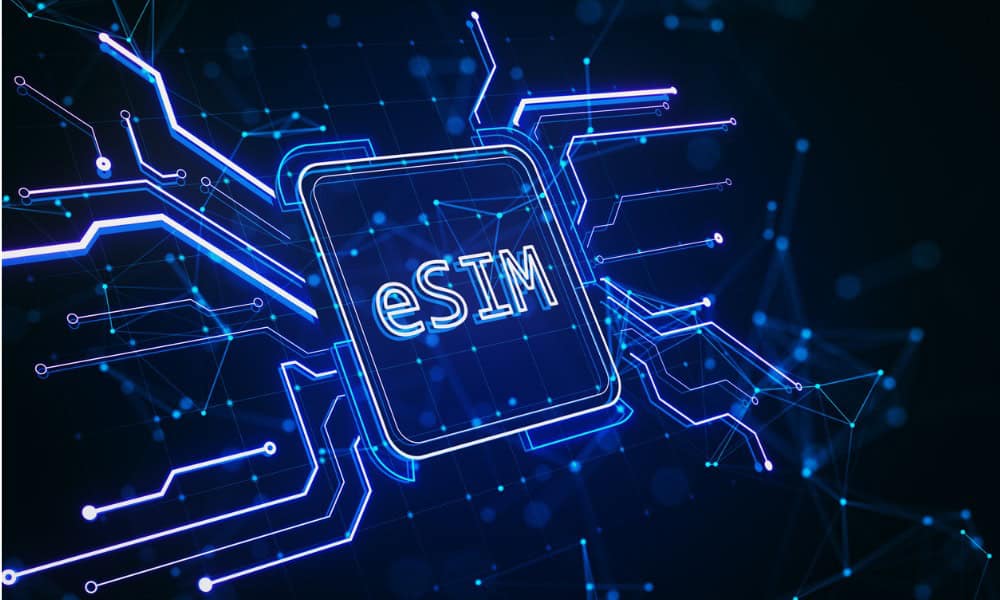Why Everyone is Switching to eSIM Technology: The Future of Mobile Connectivity

It’s time to consider switching to eSIM technology if you haven’t already. We explain the pros and cons here.
No matter what brand of cell phone you own, it depends on a SIM card to connect you to the cellular network. While physical SIM cards have been in use for decades, they haven’t changed much other than in physical size. The newer eSIM technology offers many benefits, so you really should consider switching in 2024 if you haven’t already. Let’s dive into the differences, pros, and cons of eSIM technology.
What is an eSIM Card?
An eSIM, or embedded SIM, is a small chip inside your cell phone. This chip can store multiple profiles for different cellular networks. This way, you can switch between cell plans without swapping your SIM card or visiting a store.
If you’ve bought an iPhone XS or newer, it supports eSIM technology. In fact, the iPhone 14 and later models in the United States don’t even include a physical SIM tray. Other smartphones supporting eSIM include the Google Pixel, Motorola Razr 5G, Samsung Galaxy devices, and more.
The Benefits of Switching to eSIM Technology
There are several benefits to switching to an eSIM instead of a physical SIM card. These range from simple convenience to enhanced security. Let’s look at them one by one.
The eSIM Is More Secure
Believe it or not, there’s a risk inherent in that physical SIM card. Physical SIM cards can be removed or cloned, allowing thieves and hackers to take over your phone number.
That isn’t a problem with eSIM cards. Since it’s embedded in your device, there’s no way those nefarious individuals can steal or clone your SIM. You can also protect your eSIM with a PIN code or biometric authentication, like Face ID. Even better, if your device is stolen or lost, you can remotely lock or erase your eSIM data. You can also easily transfer it to another device.
The Convenience and Flexibility of the eSIM
Since your eSIM is built into your device, it’s easy to install. You don’t need to make sure you get the right size, and there’s no need for a SIM tray ejector tool. Your provider simply sends the eSIM download to you through a QR code or email, and you’re up and running in minutes.
You can also use multiple networks on the same device or multiple plans. This allows you to, for example, have one number for personal use and one for work on the same smartphone.
This is especially helpful if you travel abroad. You can easily switch to a local network while you’re overseas without needing to find a new SIM card. This can help you avoid roaming and other international charges, all without having to change your phone number.
The Downside of eSIM Cards
There are a couple of drawbacks to using eSIM in your device. It’s a relatively new technology, which means it may not be for everyone. For starters, you may be hard-pressed to find an affordable smartphone that supports eSIM cards. While the tech is becoming more prevalent, it’s more commonly found in premium smartphones than budget choices.
Second, if your phone is lost, stolen, or damaged, it’s going to take a bit longer to get your replacement activated. You can’t just pull out the physical SIM card from the old device and insert it into the new one. You have to retrieve and download the eSIM profile from the cloud, which sometimes takes a while to do.
Finally, there’s the privacy aspect. Those worried about their mobile network tracking their location can just remove a physical SIM card, and it disappears. Not so with an eSIM: if it’s active on the device, it’s traceable.
Why You Should Switch to eSIM Technology in 2024
Despite the drawbacks, an eSIM is still a much better option for most smartphone owners. The benefits greatly outweigh the drawbacks for most people. With an increasing number of devices supporting eSIM cards, it’s really a no-brainer to switch over and enjoy the increased security, convenience, and flexibility.
Leave a Reply
Leave a Reply












